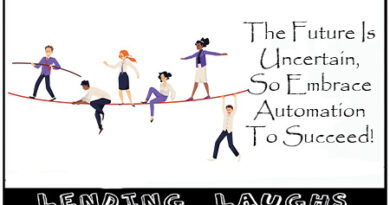Offer The Buyer Value And You Will Be Rewarded
With the mortgage industry where it is, closing that deal might be harder these days. Ryan Estis in the article “Selling What the Buyer Values” talks about the agony he feels when he hears, “We have decided not to decide,” from the buyer.
He couldn’t believe they didn’t decide. More specifically, he couldn’t believe they didn’t decide to work with him. He thought the case was clear and closed. Clearly not. Of course, his initial reaction was to look outside of himself and assign blame elsewhere.
He thought, “The customer has too many people with competing agendas influencing the outcome. Trying to make a good decision inside that company is chaos.”
He said, “The customer is overreacting to economic uncertainty. Now is the time they need to invest.”
He had a few more excuses up his sleeve when, in reality, what was hard for him to accept was the truth: He failed to demonstrate enough value. No decision is a decision.
So often, deals go to die in the land of indecision. Customers are uncertain about whether they are purchasing the right solution, and there are always dissenting voices in the organization who are against moving forward and want others to succumb to that fear. As a result, customers frequently won’t make a purchase even after an exhaustive evaluation and evidence that it’s worth the investment.
He needed to demonstrate more value to remove the no-decision option from consideration.
It is said that:
Total Customer Benefits — Total Customer Costs = Customer Value
What does that mean? You’ll need to subtract total customer costs from total customer benefits. There are two key types of customer benefits: product and/or service value and service experience value. Other types of customer benefits can include social value, personal value, and psychological value. Since benefits (and costs) tend to be qualitative, you’ll want to assign a metric to the different types of benefits and costs to see if certain benefits outweigh certain costs.”
Customers don’t buy on price. They default to price in the absence of value and a quality experience.
The onus is on us to expertly demonstrate differentiated value or live with deals dying in the land of indecision (or only closing with significant discounts).
I am not cool with either of those “race to the bottom” options.
Seventy-three percent of B2B buyers say purchases are driven by brand reputation and product features (value perceptions), according to LoSasso data.
We need to enter the arena of competition armed with a winning value proposition. What wins? What can you do that your competition can’t — and the customer can’t live without? What is the big payoff from working with you?
To find out what the buyer values, you need to invite them to tell you what value means to them. Ask effective, open-ended questions. Conduct qualitative and quantitative research, and engage your Client Advisory Board. Invite collaboration and invest in co-creating a shared vision of success.
Obsess about client success like it’s your own — because it is!
Then, adjust your pitch. Offer stories of clients who have found success in partnership with you. Prove that you will align to ensure their vision of success and that you will not live with any other possible outcome.
Buyers often know what’s wrong, but they don’t always have the answer for what will fix it. To close the deal, listen closely and offer the value they need (and perhaps didn’t realize existed) in partnership with you.

Michael Hammond is the founder and president of NexLevel Advisors. NexLevel provides solutions in business development, strategic selling, marketing, public relations and social media. A seasoned technology executive, Michael brings close to two decades of leadership, management, marketing, sales and technical product and services experience. His expertise spans start-ups to multi-billion dollar corporations, running businesses, business units, marketing, sales, strategy and product and services organizations. Michael brings exceptional insight, leadership, passion, and strategies that create profitability.



